From Paolo Guinigi to Lorenzo Trenta: patronage in fifteenth-century Lucca
The ancient history of Lucca is closely linked to the Guinigi, one of the most important and influential families of merchants and bankers in the city. Consider, for example, the famous tower that bears their name, the Guinigi Tower, erected at the behest of the family in the second half of the 14th century and still considered one of the symbols of Lucca, since it is distinguished by a real hanging garden consisting of holm oaks on its top. In medieval times, there were more than two hundred and fifty towers and tower-houses within the city walls, but the Guinigi Tower is the only one belonging to a private family not to have collapsed or been demolished by the sixteenth century. It is therefore unique in this sense, but it is also one of the many surviving testimonies to the rich and powerful family. It was part of the so-called consorteria or medieval quarter of the Guinigi and, now as then, from its almost 45 meters in height reachable by climbing more than two hundred steps, it dominates the whole city until the gaze is lost, on clear days, on the hills of Lucca. It is particularly to Paolo Guinigi (Lucca, 1372 - Pavia, 1432) that Lucca owes its transformation and its architectural and artistic splendor.
In October 1400 he became Lord of Lucca: his government focused significantly not so much on military performance, but above all on culture, on the prestige associated with artistic patronage, on the enlargement and embellishment of the city, on the construction of buildings, to give Lucca the image of a city that could compete with other Seignories. To him we owe a real territorial reorganization for the creation of a new city, a “sort of ante litteram metropolitan area” as Clara Altavista defines it, in Lucca and Paolo Guinigi (1400-1430: the construction of a Renaissance court). Here Altavista emphasizes precisely how in Paolo Guinigi two souls coexist, that of humanist sui generis and that of medieval condottiere, both present in his way of being a prince and of relating to the city whose government he had assumed. In fact, he immediately understood the importance of putting himself forward in Lucca as a “new” lord, and in the course of his rule he wished not only to create for himself anillustrious ancestry, but also committed himself to acting to perpetuate his name and lordship. He weaved important relations with the Antelminelli: he was to marry Maria Caterina Castracani degli Antelminelli, only eleven years old, great-granddaughter of Castruccio Castracani, who was captain and lord of Lucca from 1320 to 1328, but the very young girl died of the plague a few months before the wedding. Moreover, as his new city home, Paolo Guinigi chose the stately palace in the ancient Augusta fortress, erected by Castruccio, and for this reason among the Lord of Lucca’s first official acts is counted the enlargement of the palace itself.
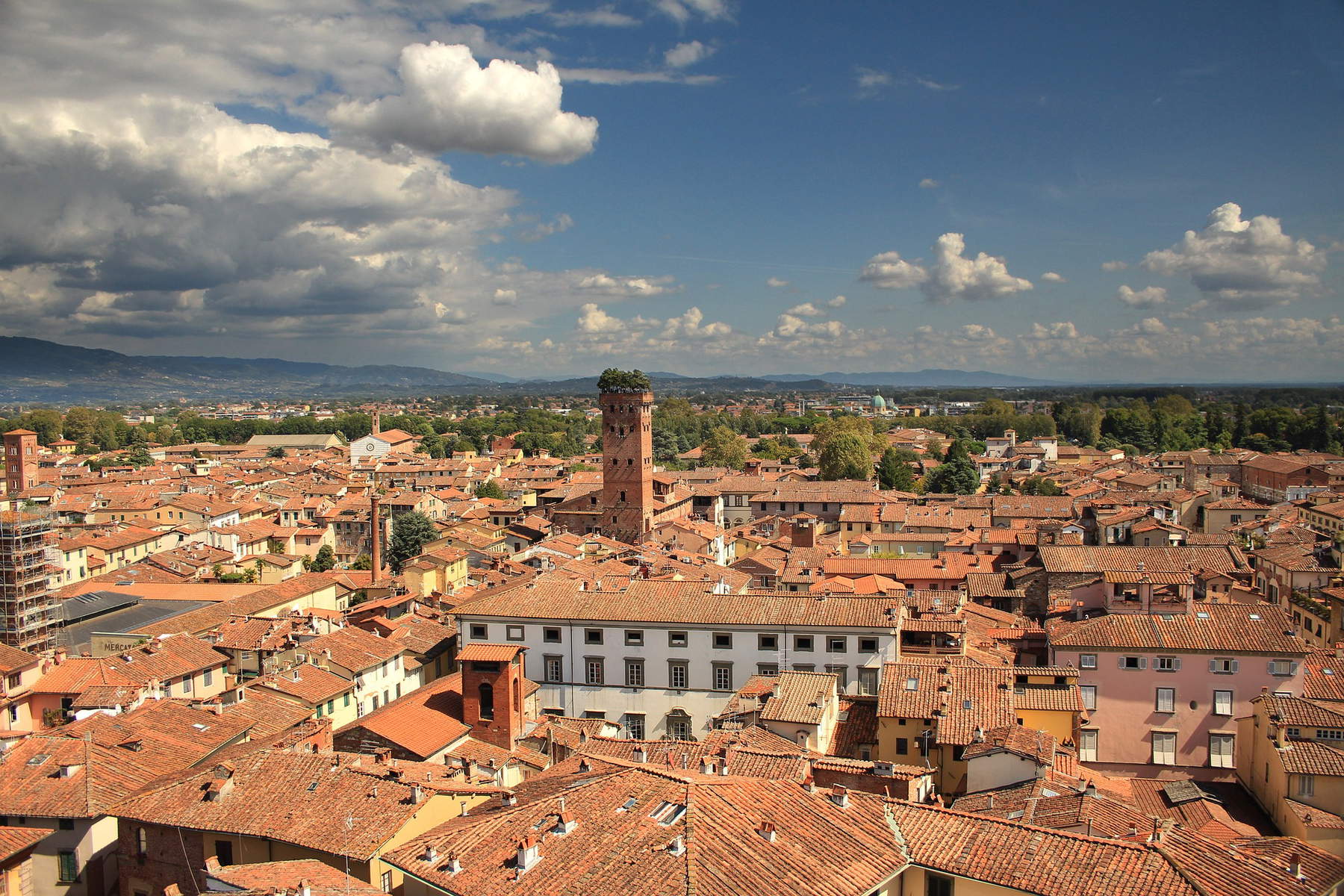
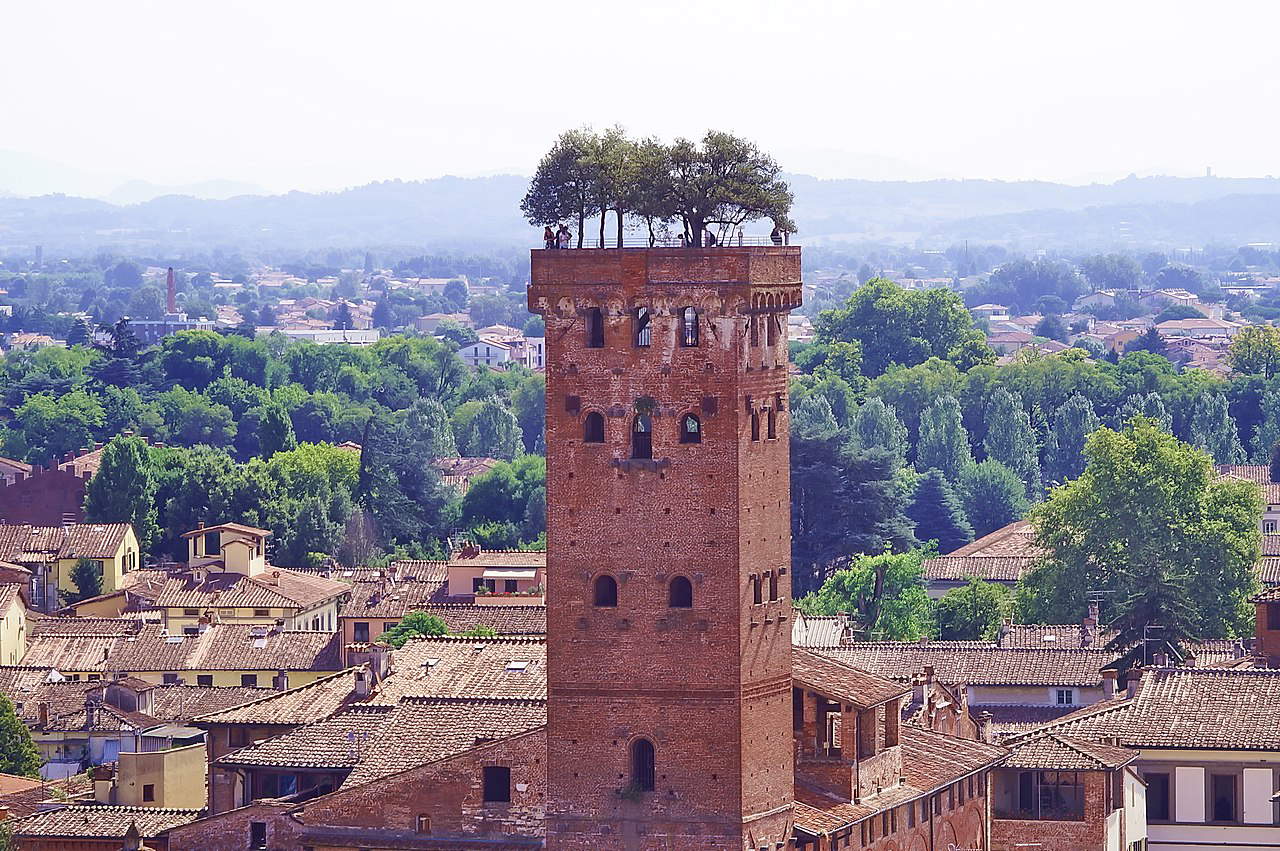
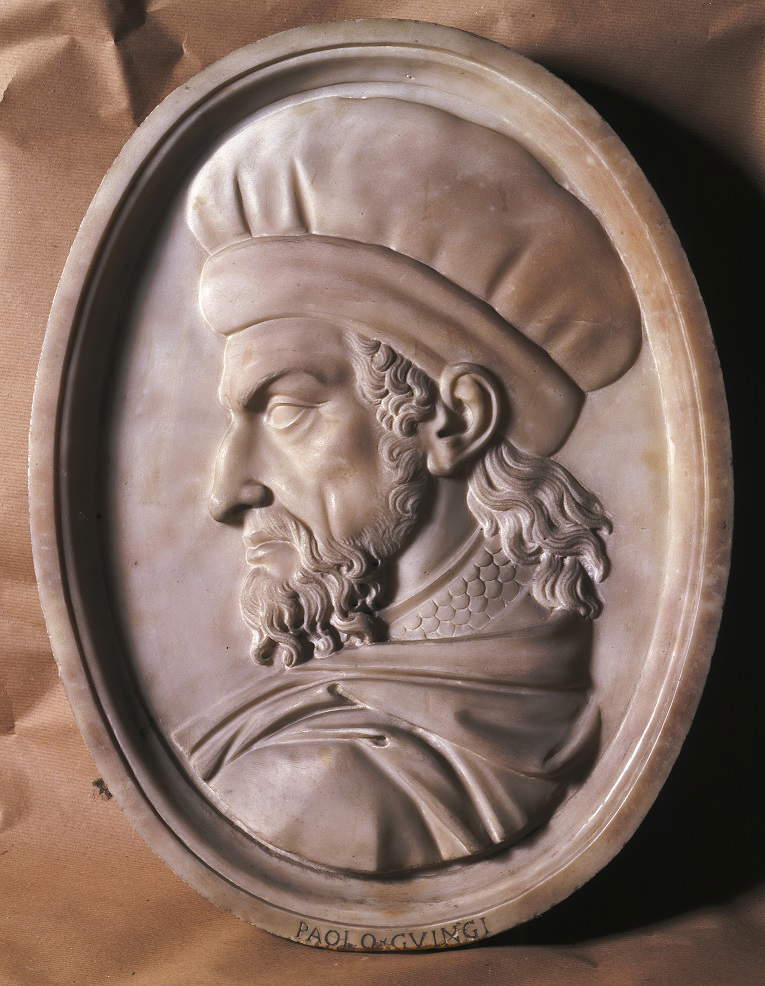
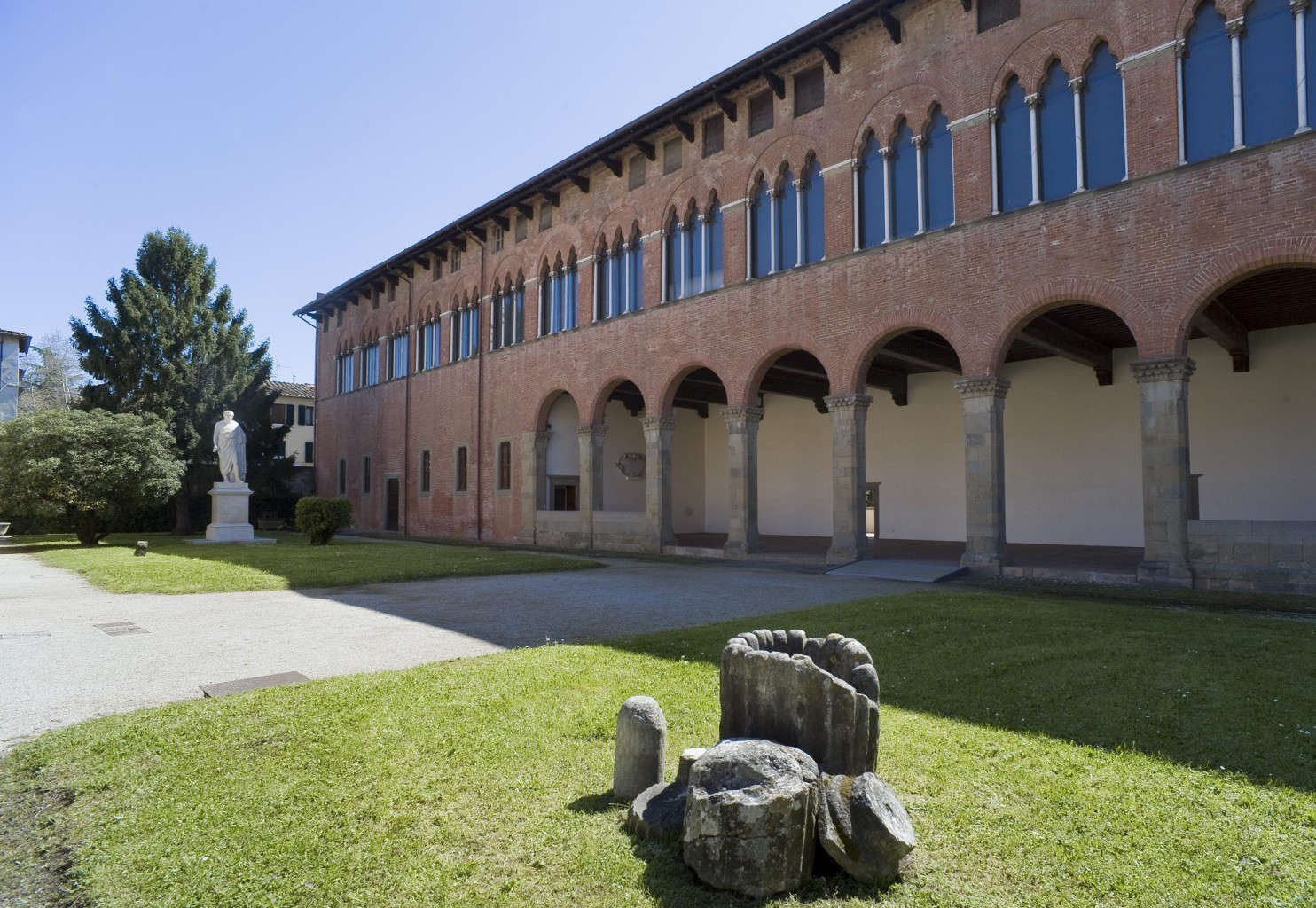

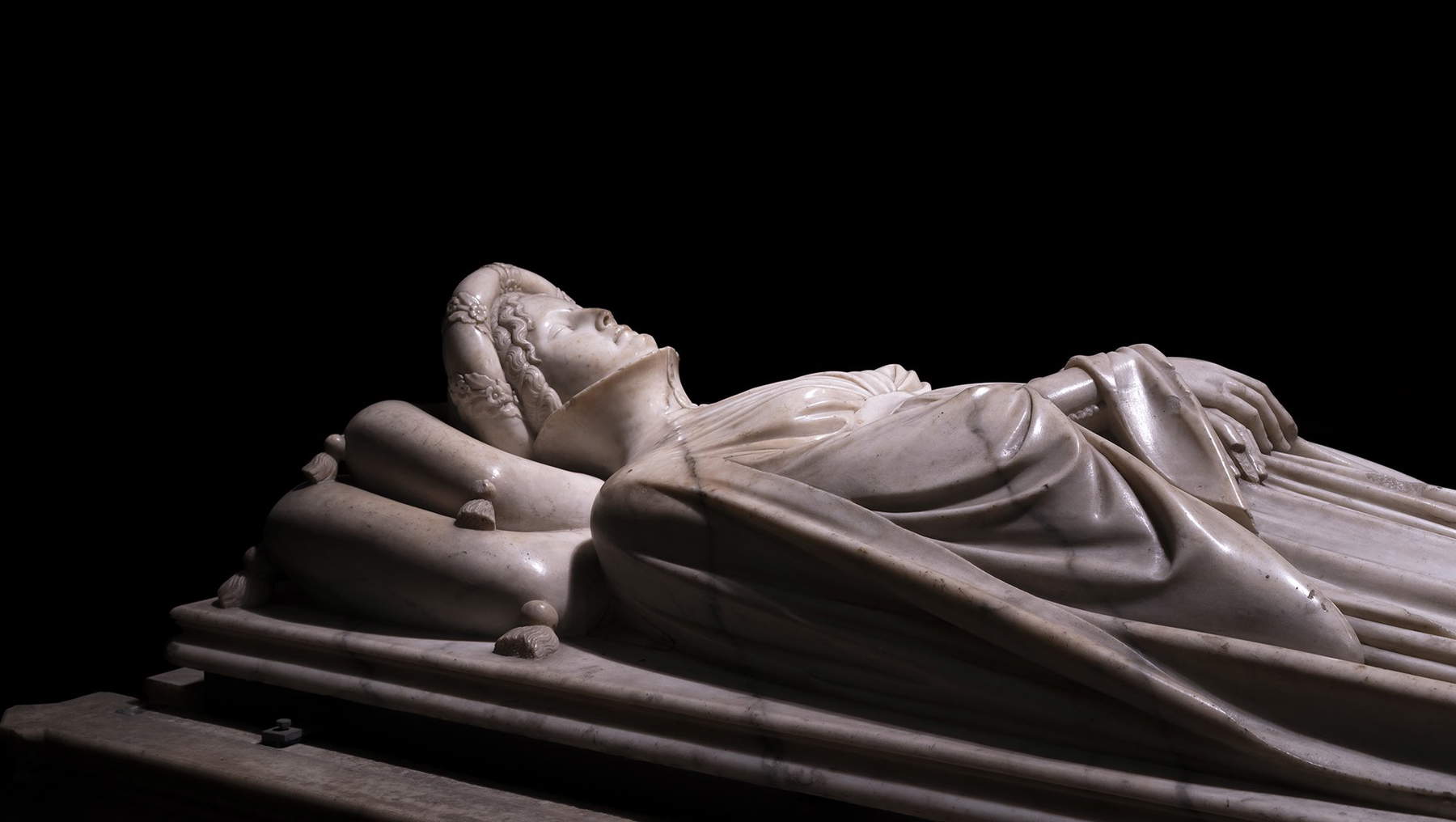
However, it is considered his greatest architectural intervention as well as the pinnacle of personal prestige to build the Palazzo dei Borghi also known as the “garden” palace between 1413 and 1420, which now houses the Villa Guinigi National Museum: “uno nobile palagio con un bellissimo giardino [...] nel qual palagio il predicto Signore alcuno tempo dell’anno fa sua dimoragione” as chronicler Giovanni Sercambi states, which he had erected by calling various artists; a suburban dwelling “monument of the humanistic otium” in a place peripheral but not marginalized from the active life of the city. Coordinating the work was the engineer Pietro di Niccolò Lamberti, and with regard to the workers involved would be Ambrogio and Donato da Fiesole, Giovanni Ganti, Domenico and Giuntino Guidi, Engherardo di Franconia, Corrado d’Alemagna, and Niccolò da Venezia. Particularly significant is the role of the portico, which places the entire building in dialogue with its surroundings; the entire architectural design is marked by an openness of spaces to the outside world, which is further emphasized by the presence of a large garden. In August 1420 the entire complex was in all likelihood already completed, at least in its forms, as it hosted the wedding feast of Paolo Guinigi and Jacopa Trinci, at which “about seventy ciptadini homini and about eighty honored women took part, adorned with drapes of silk et perle... and many foreigners and many trumpeters et piffari, buffoni et giullari.” Actually on this occasion two married couples were celebrated: in addition to Paolo and Jacopa, also Ladislao, Paolo’s eldest son, who in the same days had married Maria dei Varano di Camerino.
The construction of the Borghi palace also coincides with a very important period in Paolo Guinigi’s diplomatic career : in fact, he was a mediator in the peace of Lucca in 1413 between Genoa and Florence and obtained the title of imperial vicar for him and his descendants in the same form also obtained by Castruccio Castracani. This not only gave him recognition of his political role and lordship, but made him the legitimate heir of Castruccio, the most powerful and important Lord of Lucca.
Particularly significant for being able to trace Paolo Guinigi’s fortunes were his Carteggi and Inventari, as well as the epistolary of Guido Manfredi da Pietrasanta, one of his closest collaborators: the latter had the merit of grasping the cultural ferments of the time and transmitting them to Guinigi, who, from what emerges from the Carteggi and the epistolary, was attracted to classical readings, particularly Petrarch, and passionate about astronomy studies. And we know that he surrounded himself with leading members of the local intellectual class, such as the chronicler Giovanni Sercambi, whose famous Chronicles have come down to us, and the merchant and patron Lorenzo Trenta (Lucca, ? - 1439).
We also know from his letters that well-known goldsmiths of the time worked for him and that he was a lover and always on the lookout for glittering jewelry, sumptuous furnishings, robes, friezes, and skins for his person, his women, and family members. And for codices to be purchased, especially if they were preciously ornamented.
From the artistic-cultural point of view, Paolo Guinigi drew to himself local and non-local artists, such as the Florentine sculptor-architect Pietro di Niccolò Lamberti, the Modenese Arduino da Baìso, a carver, cabinetmaker, and inlayer, and the Sienese Jacopo della Quercia, although the activity of the latter was already known to the Lord of Lucca since Pietro da Siena, Jacopo’s father, also an artist, had made the two casts for the seal of the Signoria (in addition to being a painter and engraver, he was in fact also a carver and goldsmith). Guinigi also maintained relationships with ambassadors-procurers who kept him constantly updated on the evolution of artistic and cultural trends and who procured for him the most prestigious artifacts produced in the countries in which they stayed or with which they came into contact. For example, Giorgio Manni supplied him with furs, the Florentine Andrea Gori with hides, the Genoese Tommaso Soffia was one of his major suppliers of gems and precious stones, others were true procurers of works of art, and even Lorenzo Trenta, among the most important members of Guinigi’s circle, supplied him with gold and silverware. To the Paduan goldsmith Vincenzo di Michele da Piacenza , Guinigi himself commissioned in 1411 the Cross of the Pisans, among the highest examples ofearly 15th-century Tuscan goldsmithing. It is a precious artifact preserved at the Cathedral Museum in Lucca: a gem-studded cross resembling the shape of the tree of life from whose blossoms, on the back, appear the figures of prophets and apostles, while the front depicts Christ surrounded by four aedicules with the Eternal and the three evangelists Mark, Luke and Matthew. On either side of the cross are Mary and John and, above Christ, the mystical Pelican. According to what emerges from his personal correspondence, Paolo Guinigi in 1419 spoke to the then prior of Florence Niccolò da Uzzano about the skill of the cabinetmaker Arduino da Baìso, who, together with his brother Alberto, made the wooden studiolo of the Lord of Lucca for the lordly palace of the Augusta: commissioned probably in 1413 to place the books of his own library in it, it was completed the following year.
However, there is no doubt that when one thinks of the masterpieces that Paolo Guinigi had made in his city, it is the Funeral Monument of Ilaria del Carretto that immediately comes to mind: the work in marble that he himself commissioned from one of the most celebrated sculptors of the time, Jacopo della Quercia, to create the funeral monument of his second wife, who died at only twenty-six years of age during her second childbirth. Executed between 1406 and 1410, although the sarcophagus had probably already been nearly completed in April 1407, the monument constituted at the time a unique, unprecedented work that differed from the usual funerary monuments leaning against a back wall of a church typical of the Two-Thirteenth century. The sculptural masterpiece, now housed in the sacristy of the Cathedral of San Martino in Lucca, is awork in theround in which the artist interweaves Sienese Gothic sculpture with Burgundian sculpture and classical elements, placing lying on a sarcophagus, as if resting in perpetual sleep, a young woman accompanied by a faithful little dog at her feet.
Also significant for the Cathedral of San Martino were two prominent families in 15th-century Lucca: the Noceto and Bertini families. The celebrated sculptor Matteo Civitali was commissioned to create the funerary monuments of two members of their respective families: Pietro da Noceto, a humanist and secretary to Pope Nicholas V, and Domenico Bertini da Gallicano, a patron who was also responsible for the creation of the Tempietto del Volto Santo that can be seen in the Cathedral itself. Civitali depicted portraits from nature of the deceased: Bertini’s effigy is depicted both in his funeral monument and in the Tempietto, while that of Pietro da Noceto, whose full figure surmounts the sarcophagus accompanied by a book and a knightly sword, is also repeated as a half-length in profile in the lunette crowning the Tomb, placed in front of the effigy of his son Nicolao , who commissioned the funerary work in honor of his father when he was just 18.
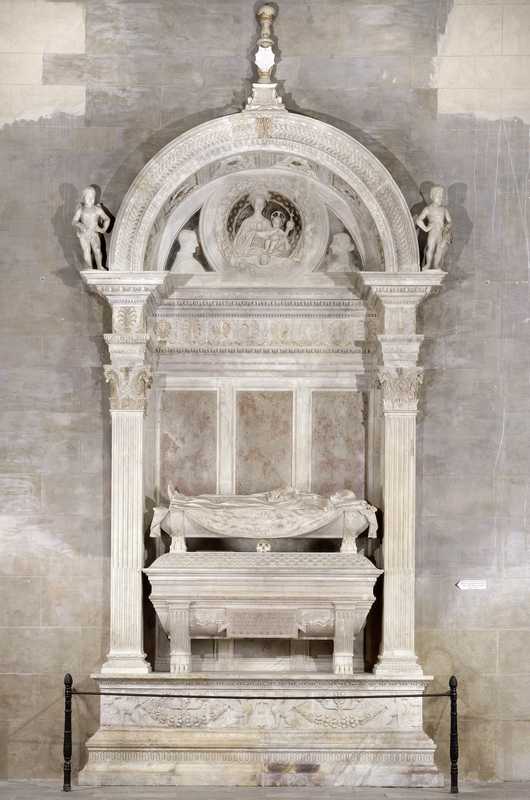
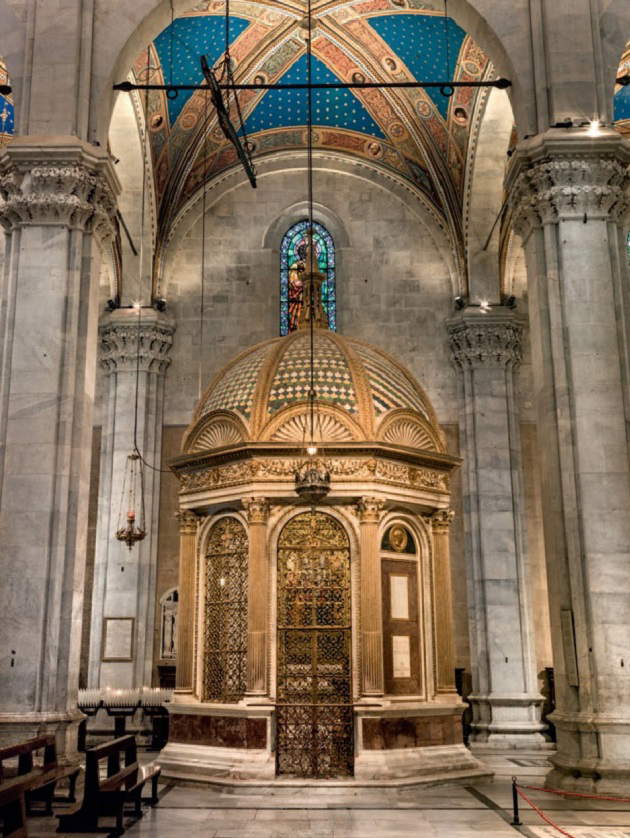
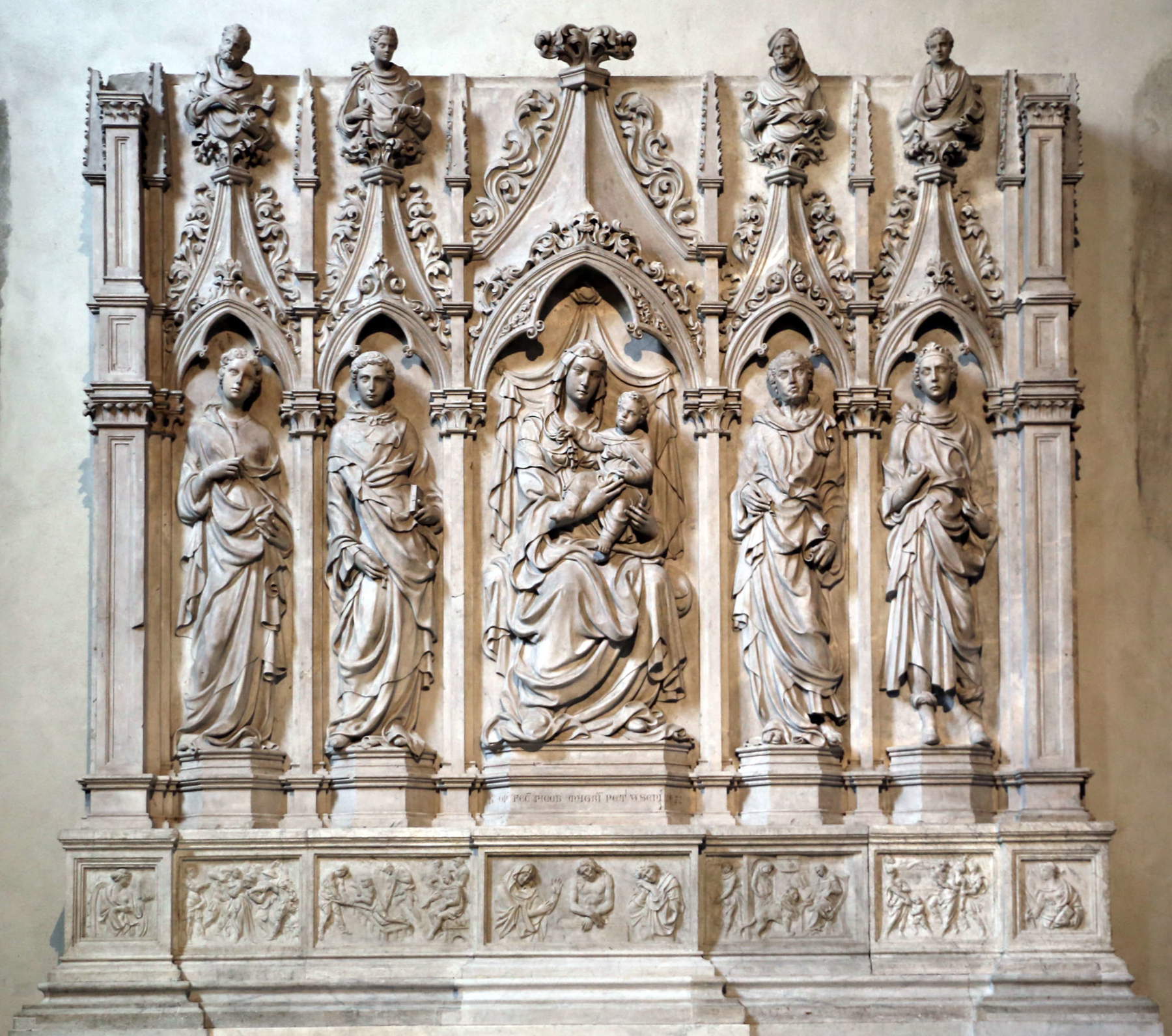
On the other hand, the chapel of the wealthy Lucchese merchant and patron Lorenzo Trenta, already mentioned as one of the leading members of Paolo Guinigi’s circle, is located in the Basilica of San Frediano. In fact, Trenta obtained permission in 1412 to be able to renovate one of the chapels in the Lucchese Basilica: he then entrusted the task to Jacopo della Quercia. Four years later, in 1416, the patron also obtained permission to bring to the chapel the body of St. Richard, already buried in the Basilica of San Frediano. The Trenta chapel is in fact dedicated precisely to the saint who died in the Tuscan city, and is depicted in the sculptural monument by Jacopo della Quercia on the far right. The Sienese sculptor created for the chapel the large , finely carved marble polyptych with the Madonna and Child and Saints Ursula, Lorenzo, Jerome, and Riccardo, where each half-relief statue is placed in a cusped niche, and the two terragne tombs of Lorenzo Trenta and his wife, with bas-reliefs of the gentlewoman belonging to the Onesti family and her husband placed at her side.
From Paolo Guinigi to Lorenzo Trenta, patronage in Lucca in the 15th century marked an important chapter for the city: it was a period of extraordinary artistic and cultural fervor in which works of great value were created. During the Guinigi Signoria, the city of Lucca took the lead in promoting the greatest artists, particularly in the field of sculpture, and intellectuals of the time. The patronage of Paolo Guinigi, Lorenzo Trenta and other illustrious Lucca figures not only contributed to enriching the artistic heritage of the city, but bequeathed unique masterpieces that became true cornerstones of Italian art history.
Warning: the translation into English of the original Italian article was created using automatic tools. We undertake to review all articles, but we do not guarantee the total absence of inaccuracies in the translation due to the program. You can find the original by clicking on the ITA button. If you find any mistake,please contact us.



























